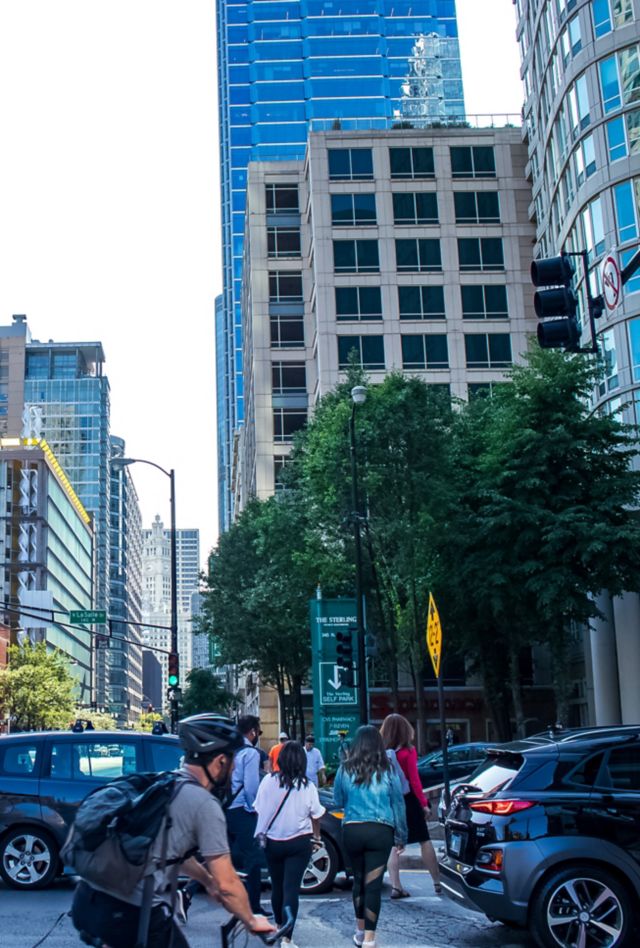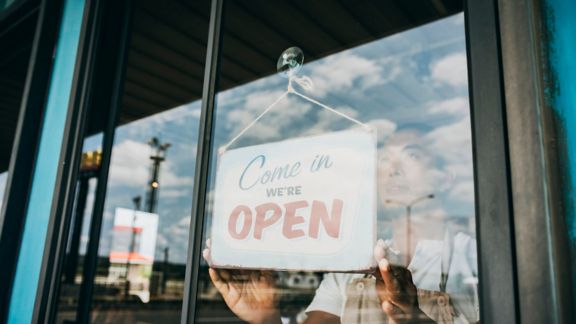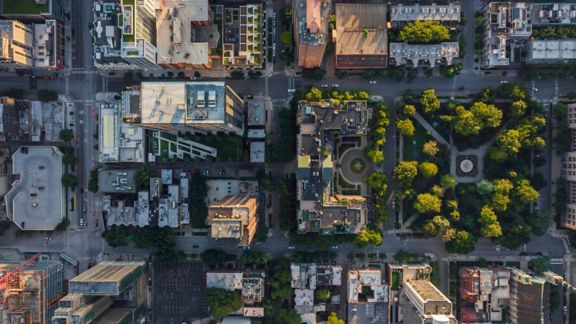Q&A: Daniel Webster & John Roman on Filling the Crime Data Void

Daniel Webster
Bloomberg Professor of American Health
Johns Hopkins Bloomberg School of Public Health
July 2024
Daniel Webster, a public health policy researcher studying gun violence at the Johns Hopkins Bloomberg School of Public Health, interviews John Roman, director of the Center on Public Safety & Justice at NORC at the University of Chicago, about NORC’s landmark Live Crime Tracker, which offers real-time crime data from over 50 U.S. cities.
Crime rates are the lowest they’ve been in almost 50 years. However, few people know this, and even those who do don’t always believe it. This is partly due to the lack of timely, objective, and transparent crime data.
As a research scholar in Johns Hopkins’ Center for Gun Violence Solutions and professor in the Johns Hopkins Bloomberg School of Public Health, I have long been frustrated by the limitations of crime data and the difficulties this has posed to coming up with the shared set of facts needed to create more efficient, effective, and responsive strategies to reduce crime.
I recently spoke with John Roman, director of NORC at the University of Chicago’s Center on Public Safety & Justice, to learn more about how NORC’s new Live Crime Tracker fills the crime data gap. John and I first discussed problems with the availability of crime data in 2019, when I participated on NORC’s Firearms Data Infrastructure Expert Panel, which John led. Our panel’s work revealed huge gaps in the U.S. federal system of data crucial to decreasing firearms violence.
DANIEL WEBSTER: John, I’ve spent more than 30 years studying gun violence, examining the gaps and the quality of the data. You put something together to try to fix that.
JOHN ROMAN: Live Crime Tracker is a daily reporting of crime statistics on eight different types of crime—aggravated assault, simple assault, burglary, homicide, larceny/theft, motor vehicle theft, robbery, and sex offenses—from more than 50 of the 200 biggest cities in the United States. It allows you to look at crime trends within a city and compare them across cities, across different types of crime. The FBI’s official national crime statistics tend to be reported in the fall from the previous year, which means that by the time those data come out the newest numbers are outdated. For any city, or for anybody in the interested public who wants to affect change, that’s too late. Our tracker fills that gap.
WEBSTER: What's unique about the tracker?
ROMAN: The first thing to say is that there is momentum for innovation, and our team is not alone in its commitment to addressing the problems of crime and violence by closing the data gap. However, unlike the Live Crime Tracker, other tools tend to focus on one specific type of victimization, such as homicide. What we've done is create a data source that is representative of big cities in the United States, covers every type of serious crime, and does it in a timely way. We scrape the data as soon as cities put it up on their databases.
WEBSTER: I see great value in that. Can you say more about why you think this resource is important?
ROMAN: In the last four years we’ve seen dramatic spikes in crime and violence and then dramatic declines. Having regularly reported data allows us to understand where we are in these cycles. Even now, when I talk to people about the current substantial decline in violence, they don't believe it. Even policymakers at the highest levels of local and federal government are skeptical. Being able to view daily crime data via our tracker—where you can see every day that this trend is building, continuing, and is sustained—provides credibility.
WEBSTER: Tell me about NORC’s Center on Public Safety & Justice, which developed the tracker.
ROMAN: Understanding and intervening in crime to support and improve public safety is a collaborative effort that crosses just about every social sector imaginable, including education, health, and the workforce. All those sectors are affected by crime, and all of them affect crime. Our center’s vision was to gather NORC researchers with significant expertise in each of these domains under one roof, to think about crime and justice—and public safety—holistically, and how to make the whole field more data-driven and evidence-based. Finding evidence and creating data-driven solutions is the only way to improve policy, practice, and public safety.
WEBSTER: Is it fair to say that you came up with this vision because you saw something that other such centers were not fully addressing?
ROMAN: There's an old saying: “You go to war with the data you have, not the data you wished you had.” We see people doing this across our field, but NORC wanted to take a giant step back and say: “Well, what if we improve the data? What if we can create a resource not just for researchers but for policymakers, practitioners, community members, and the public at large?”
WEBSTER: I admire the bold vision. I, too, was always frustrated that we were prisoners to the data that we had; we all were looking at the same indicators. Even those who understand and study the problem of violence and crime didn’t have the data to track the things they thought were most important. A lack of data is precisely why we have struggled to understand what's going on with violence. We identified this problem during our work on NORC’s Firearms Data Infrastructure Expert Panel, plus something puzzling; because the public doesn’t track the data themselves, they tend to think that crime and violence are always getting worse, even when the data show otherwise. Why?
ROMAN: I think the public has access to information that is being filtered in all kinds of ways for all kinds of reasons. So, if you're in a world like the one we're in right now—where sharp increases in crime are followed by steep declines—and daily crime data haven’t been readily available, and the media and other commentators fill that void with emotion and ideology, getting the facts out is a real challenge.
The Live Crime Tracker addresses that challenge by providing real-time data and allowing you to identify trends. I would argue that nothing is more important than knowing the trends. Are you in a place where crime's becoming increasingly worse or a place where it's improving? If it's improving—like violence is today—we need to know that, and we need to know it immediately, just like we knew about COVID-19 in March 2020. Can you imagine if we had to wait until the end of 2021 to know about COVID’s spread in March 2020? It would have been far too late. We need to be ahead of these trajectories.
WEBSTER: At least some forms of violent crime do operate like a social contagion, so your analogy is quite apt. In public health, we study epidemics all the time; things can change quite rapidly and having timely, accurate, open data is critical. I have always viewed open data as foundational to enhancing public understanding of crime, too. Having access to data in a timely way is essential to considering what might be driving crime and for more productive problem-solving. That said, crime data are far from perfect. How does the Live Crime Tracker approach these imperfections?
ROMAN: The most fundamental aspect of effective crime policy is open data. We looked at the top 200 U.S. cities by population to see how many had open data and found that only one-quarter did. Those cities have completely automated data systems—such as record management systems that local law enforcement uses to keep track of crime reports internally—that allow our tracker to go out, grab, and pull in their data.
The biggest challenge is that some of the data are incomplete because of the way local governments report it. We had to decide whether to smooth out those edges or just present it, warts and all, and let people understand the variation and variability in how cities report their crime data. We decided on the latter, so it's not as visually appealing as it might have been.
WEBSTER: Perhaps more cities will be compelled to start reporting data publicly?
ROMAN: We're hoping people say, “Hey, this isn't good enough. We need to do better. It is ridiculous that data from Oakland look like this. They need to give us the data that we need in a democracy to make good decisions.”
WEBSTER: What’s next for the Live Crime Tracker?
ROMAN: We want to go back to our original list of 200 cities to see how many now make their data publicly available and examine whether we are expanding our open data capacities and capabilities as a nation.
It’s worth noting that just because the Live Crime Tracker currently reports crime data from over 50 of our biggest cities doesn’t mean that crime is a big city problem. It is not. If you look at data from 2020, some of the biggest increases in crime and violence were in rural areas and outside of metropolitan areas. That’s why we intend to examine and include smaller geographies whenever possible.
We hope to add the harms-from-victimization estimates that we’ve developed as part of our HAVEN project for the National Institute of Justice, too. Knowing crime’s cost is critical to ensuring appropriate investment in crime prevention.
We also intend to spotlight implications for policy and practice. Then, we would like to get into your world and understand more about firearms violence.
In addition, we want to look at everything historically so that we can understand this quite unusual period of 2020 to 2024 considering what it used to be—stable slow increases and slow declines—and see whether that was true everywhere. We need to look back far enough to times when crime was stable to understand these changes.
WEBSTER: All this is music to my ears. I will note that taking the gun part of crime out of the equation gives remarkable stability over time. These big increases and big decreases are almost always driven by what's going on with gun violence.
ROMAN: This is exactly right. Hopefully, the Live Crime Tracker can evolve to the point where it can show firearms-related data so people can also unpack that challenge.
Thank you for talking with me.
WEBSTER: This has been great.
Suggested Citation
Webster, Daniel (2024, July 24). Q&A: Daniel Webster & John Roman on Filling the Crime Data Void. [Web blog post]. Retrieved from www.norc.org.







